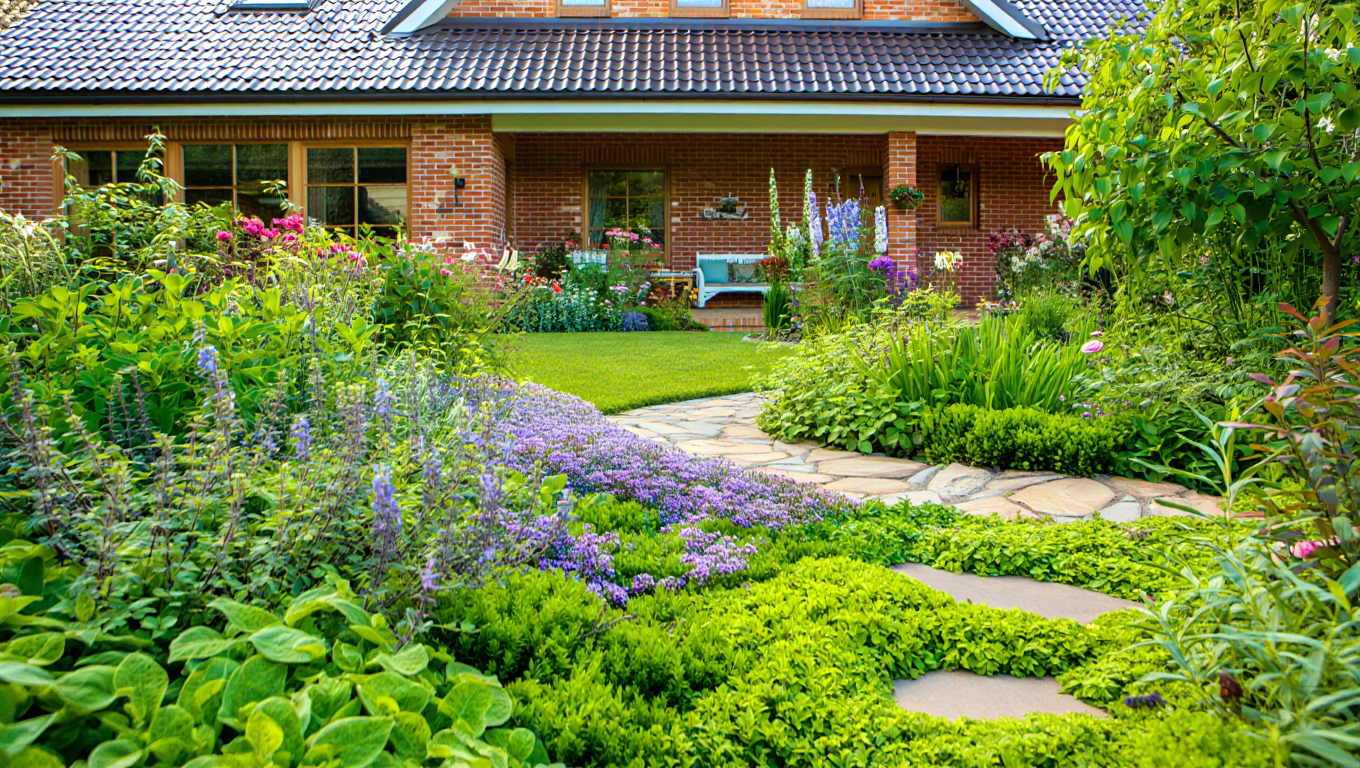If you’ve ever looked at your garden and imagined an easy fix for weeds—a living carpet that keeps the soil shaded and green—you’re not alone. I did too. I fell for those promises of “self-sustaining” ground covers that would save me from endless weeding and mulching. But what nobody tells you is that some of these so-called solutions don’t stop at weeds—they become weeds themselves. They creep, climb, and quietly claim every inch of open soil until the plants you actually love start disappearing.
I still remember planting a few patches of “easy ground covers” one spring, feeling proud that I’d found the perfect low-maintenance solution. By the next year, they had crept into my flower beds, swallowed my edging, and even popped up in my vegetable patch. I spent the entire summer on my knees trying to pull out what I’d once celebrated as my smartest garden choice. That was the season I learned: not every green promise is a good one.
So before you make the same mistake I did, read this first. I’m calling out 10 “living mulches” that looked helpful but turned into headaches — how they spread, what they smother, and the red flags I missed — so you don’t invite the problem into your garden.
1. Microclover (Dutch White Trifolium Hybrid)
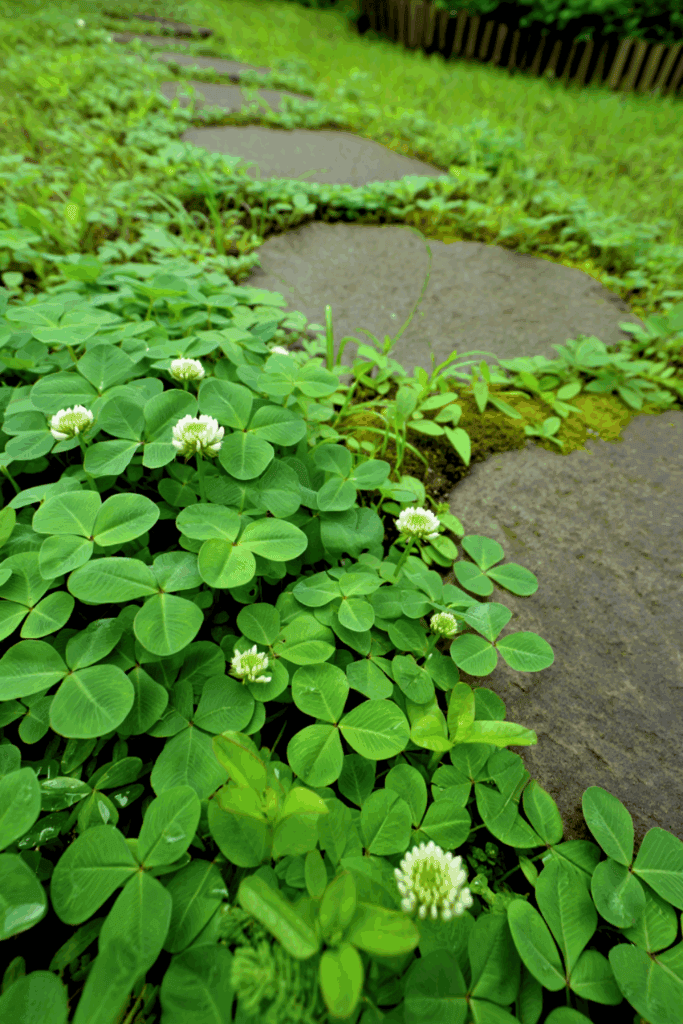
Microclover often gets promoted as the miracle lawn plant — small, tidy, and self-fertilizing. But that’s exactly why it can quietly take over more than you planned. Its fine creeping stems root easily wherever they touch soil, weaving into turfgrass and garden edges until the distinction between lawn and bed disappears.
While it improves nitrogen levels, that same richness can fuel unwanted weed growth nearby. In warm or humid conditions, it spreads quickly and crowds out slower perennials, leaving little room for diversity. It’s not as invasive as standard clover, but once it’s mixed into your lawn, it’s nearly impossible to remove without starting over completely.
- Type: Perennial nitrogen-fixing ground cover
- Hardiness: USDA Zones 4–9
- Light: Full sun to partial shade
- Spread Rate: Moderate to fast; roots wherever stems touch soil
- Invasiveness: Medium; difficult to remove once established
- Control Tip: Contain within defined lawn zones; edge trim monthly
- Biggest Risk: Overtaking turf and promoting excess soil fertility for weeds
2. Acaena inermis ‘Purpurea’ (Purple New Zealand Burr)
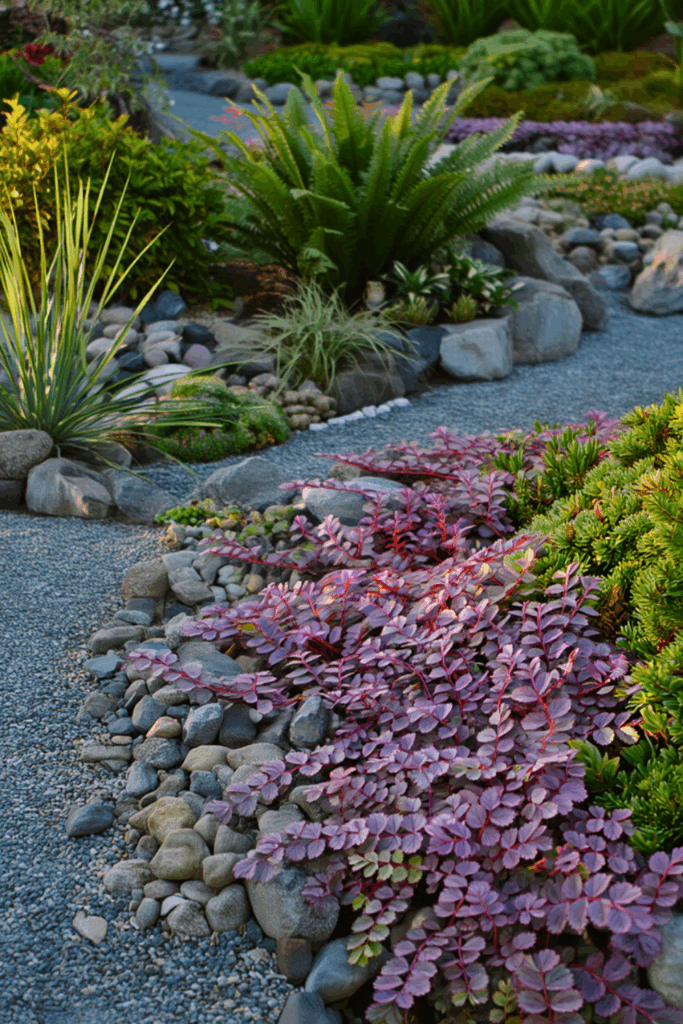
Purple New Zealand Burr is not your typical green ground cover—it brings deep bronze-purple tones that look stunning against stone, gravel, or light paving. The small, fern-like leaves form a tight, creeping mat that stays evergreen in mild climates, holding color through most seasons. It tolerates light foot traffic and weaves naturally between stepping stones, creating a modern, high-contrast lawn effect.
Unlike aggressive spreaders, it grows at a steady pace, filling gaps without taking over. Its unusual color makes it a perfect choice for minimalist or contemporary gardens where texture and tone matter as much as function.
- Type: Evergreen perennial ground cover
- Hardiness: USDA Zones 6–10
- Light Needs: Full sun to partial shade
- Growth Habit: Creeping mat-forming
- Size: 2–4 inches tall, spreading 1–2 feet
- Foliage/Flowers: Bronze-purple fern-like leaves; small burr-like seed heads
- Soil & Water: Well-drained soil; moderate watering; drought-tolerant once established
3. Dichondra repens (Kidney Weed)
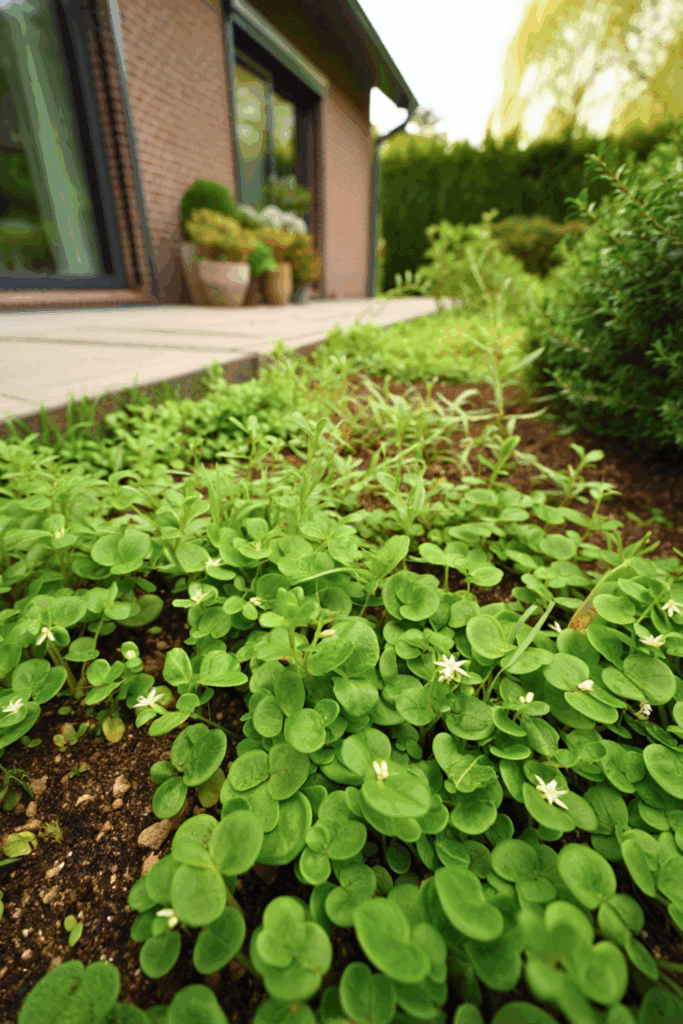
Kidney weed looks charming at first — its bright green, coin-shaped leaves form a smooth carpet that seems tailor-made for shady corners and stepping stones. But give it a season of comfort, and you’ll see why many gardeners regret planting it. Those delicate runners creep far beyond where you intended, weaving through other plants and taking root in the smallest cracks.
It’s nearly impossible to pull out completely once it gets into flower beds or lawns. Even the tiniest fragments of root can regrow, meaning you’ll spend months chasing new sprouts. In damp or humid regions, it can also trap moisture and encourage fungal problems near the soil surface. Pretty? Absolutely. Easy to control? Not even close.
- Type: Perennial ground cover
- Hardiness: USDA Zones 8–11
- Light: Full sun to partial shade
- Spread Rate: Rapid via creeping stems and nodes
- Invasiveness: High; roots easily and re-sprouts from fragments
- Control Tip: Avoid planting near lawns or mixed borders; edge barriers help
- Biggest Risk: Spreading into lawns, flower beds, and cracks between stones
4. Blue Star Creeper (Pratia pedunculata)
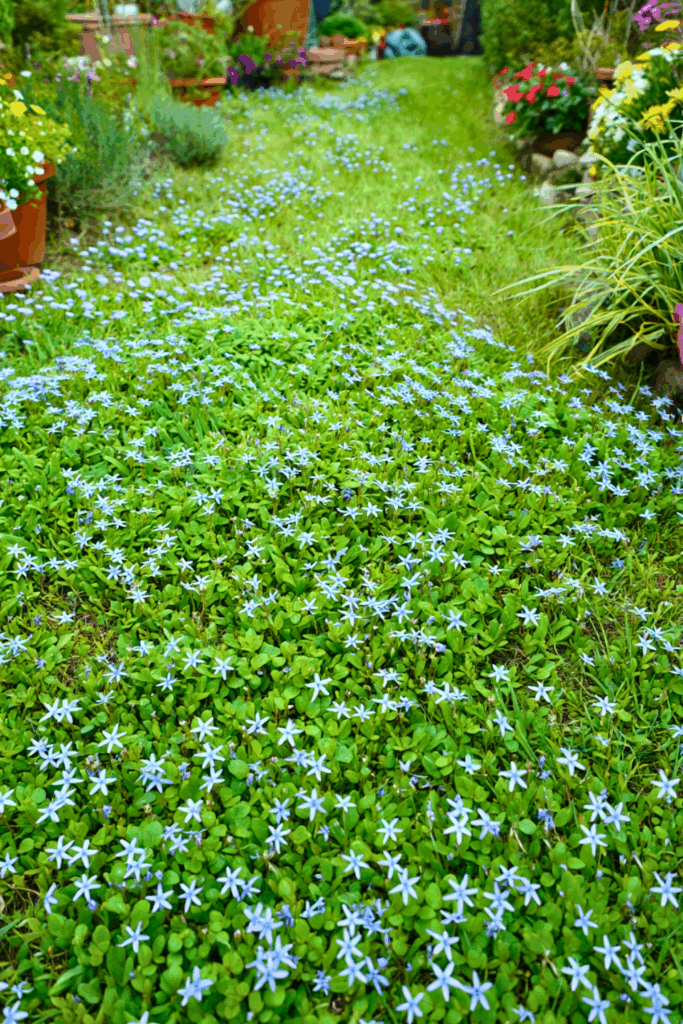
Blue star creeper seems gentle — a soft mat dotted with tiny blue flowers that looks perfect between stepping stones. But beneath that charming surface, it hides a determined nature. Once it takes hold, it spreads through underground stems and quickly fills every gap it can find, often reaching beyond its intended borders.
It thrives in moisture, so if you have irrigation or shaded areas, it can double its coverage in one season. Removing it isn’t easy either — each tiny piece of root can resprout and start again. Without constant edging, it can creep into lawns, paths, and even gravel. Beautiful in moderation, but once it escapes, you’ll spend years reining it back in.
- Type: Perennial flowering ground cover
- Hardiness: USDA Zones 5–9
- Light: Full sun to partial shade
- Spread Rate: Fast; through underground stems
- Invasiveness: High in moist or irrigated areas
- Control Tip: Contain with deep edging and limit watering
- Biggest Risk: Root spread beyond control and self-seeding between cracks
5. Leptinella squalida (Brass Buttons)
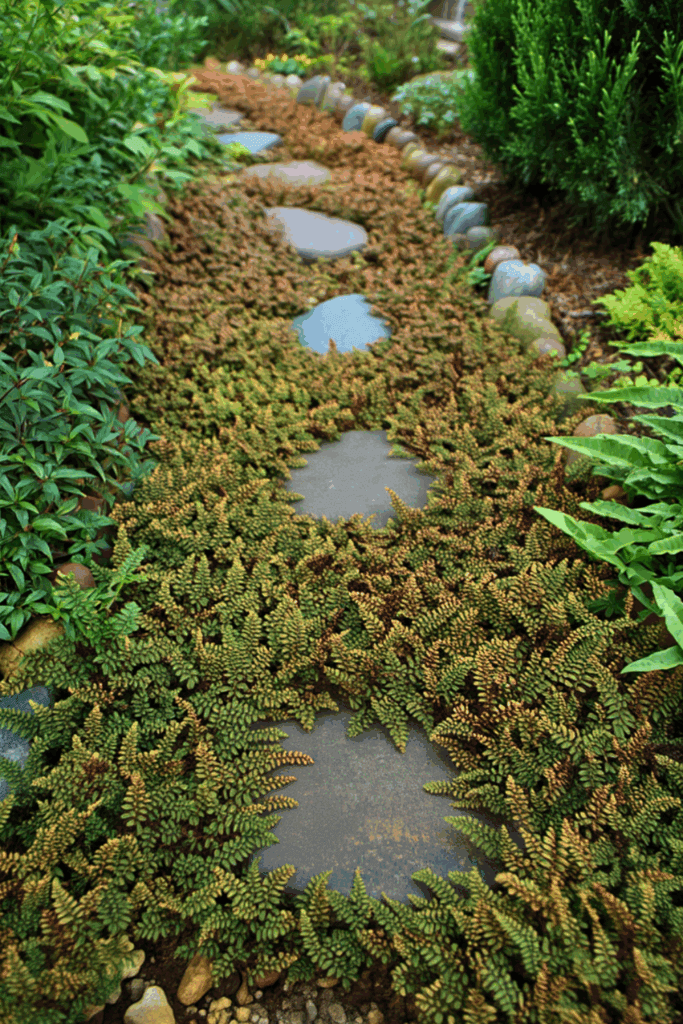
Brass buttons are often praised for their fern-like texture and tidy appearance, but they can be surprisingly aggressive once established. Each tiny frond may look delicate, yet the plant spreads through a network of underground stems that quickly creep into nearby lawns or flower beds. If left alone, it can form such a dense mat that water and air struggle to reach the soil beneath.
Its charm also fades in heat — foliage can brown or die back, only to return even thicker in cooler weather. While it’s striking in containers or defined stone paths, in open garden beds, brass buttons tend to wander far beyond their welcome.
- Type: Perennial fern-like ground cover
- Hardiness: USDA Zones 5–10
- Light: Full sun to partial shade
- Spread Rate: Fast through underground rhizomes
- Invasiveness: Moderate to high if unchecked
- Control Tip: Keep confined with edging or plant in dry, rocky areas
- Biggest Risk: Overcrowding soil and creeping under neighboring plants
6. Corsican Mint (Mentha requienii)
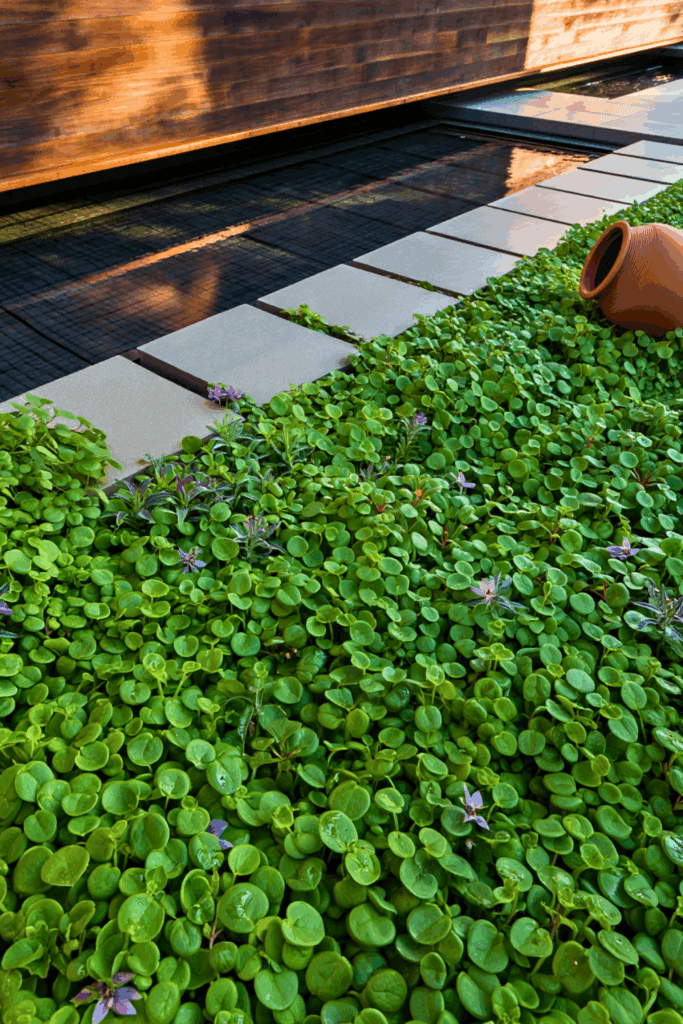
Corsican mint looks harmless — a soft, aromatic mat that releases a sweet scent when touched. But beneath that charm lies one of the most persistent spreaders in the mint family. It creeps fast through cracks, over rocks, and into garden beds, rooting at every node. Once it finds moisture and shade, it can blanket soil so densely that even low plants struggle to breathe.
In damp spots or near pathways, it also becomes slippery and prone to mold. And like most mints, pulling it out rarely works — even a single piece left behind will start a new patch. A lovely ground cover in a container, yes — but in open soil, it can quickly become more burden than beauty.
- Type: Perennial aromatic ground cover
- Hardiness: USDA Zones 7–11
- Light: Partial shade to filtered sun
- Spread Rate: Fast; roots at every node
- Invasiveness: High in moist, shaded soils
- Control Tip: Grow in confined spaces or between hard surfaces only
- Biggest Risk: Rapid spread, slippery surface, and regrowth from fragments
7. Zoysia tenuifolia (No-Mow Grass)
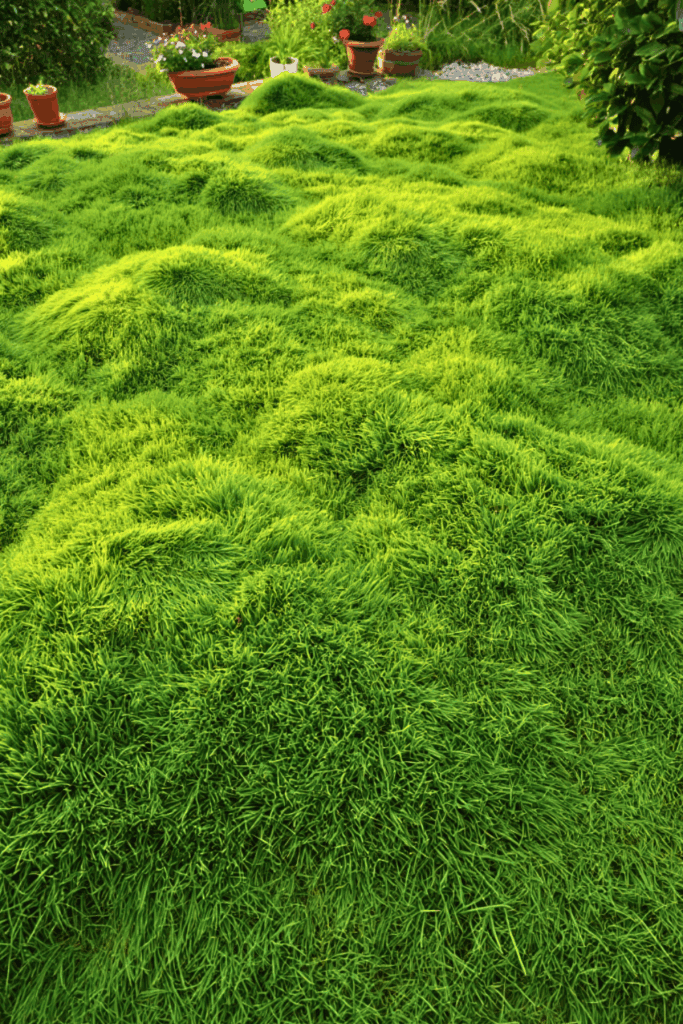
Zoysia’s promise of a low-maintenance, no-mow lawn sounds ideal—until you learn how it behaves outside perfect conditions. This grass creeps by underground stolons, thickening into dense, thatch-like mats that can choke out other plants and even its own roots over time. Once established, removing or re-leveling it is a challenge few gardeners forget.
It thrives in heat but turns straw-brown in cool or shaded spots, leaving patchy areas that recover slowly. Its slow green-up in spring and high water demand during summer can frustrate those expecting effortless upkeep. Great for golf courses and manicured lawns—but in mixed gardens, it often overstays its welcome.
- Type: Warm-season perennial grass
- Hardiness: USDA Zones 6–11
- Light: Full sun
- Spread Rate: Slow to establish, fast to overtake once mature
- Invasiveness: Moderate through stolons
- Control Tip: Edge yearly and avoid mixing with cool-season grasses
- Biggest Risk: Thatch buildup and dominance over nearby plants
8. Roman Chamomile (Chamaemelum nobile)
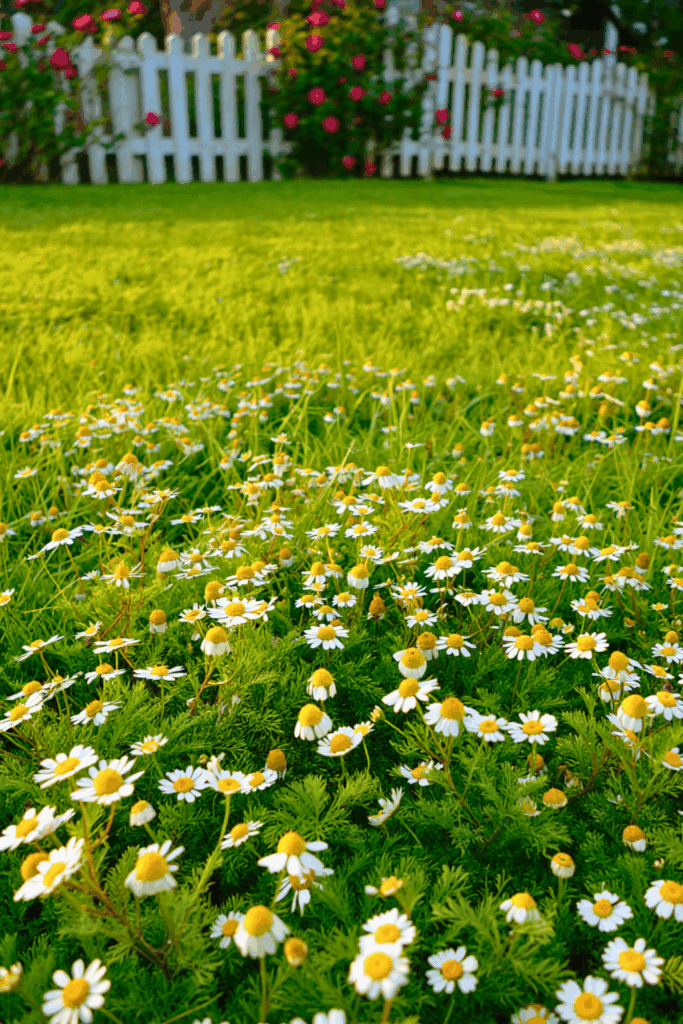
Roman chamomile looks soft, smells wonderful, and even attracts pollinators—but it can be trickier than it appears. In warm climates, this “lawn alternative” grows fast, sending creeping stems in every direction, often slipping into cracks, gravel, and nearby borders. Once rooted, those stems are tough to remove without disturbing surrounding plants.
It also demands the right balance of moisture and drainage. Too dry, and it browns quickly; too wet, and it rots from the crown. Despite its reputation as a carefree ground cover, maintaining a tidy patch often means frequent trimming and thinning. Left unchecked, it turns from charming to chaotic in a single season.
- Type: Perennial herbaceous ground cover
- Hardiness: USDA Zones 4–9
- Light: Full sun to light shade
- Spread Rate: Moderate to fast through runners
- Invasiveness: Medium; self-seeds easily
- Control Tip: Plant in contained beds and prune regularly
- Biggest Risk: Overgrowth and crown rot in damp soils
9. Lippia nodiflora (Frog Fruit / Mat Lippia)
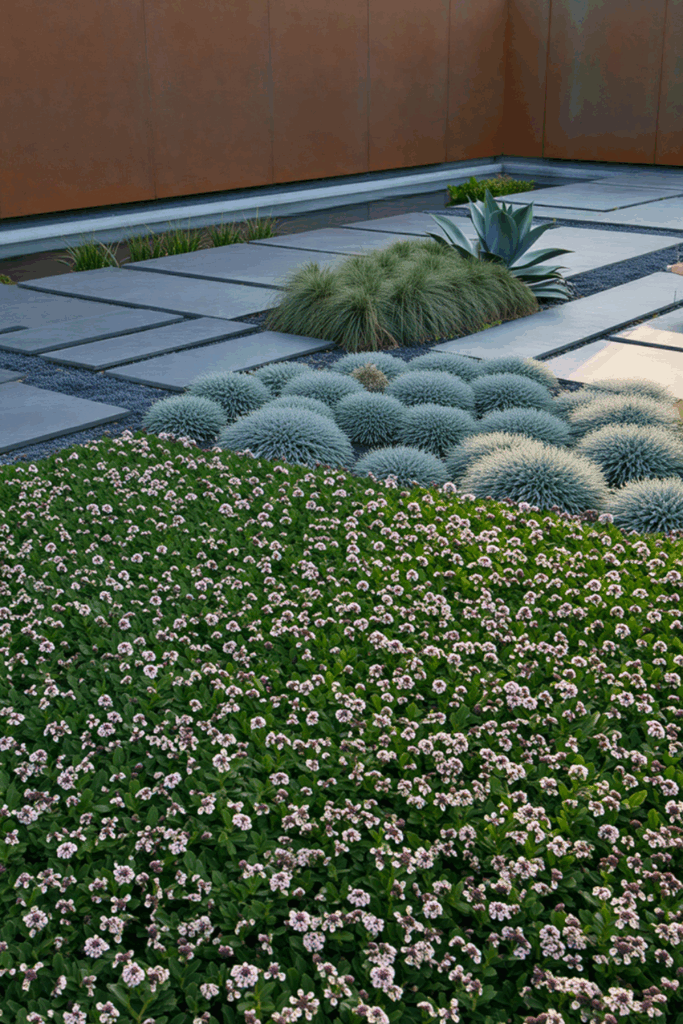
If you want a living mulch that’s as tough as it is beautiful, frog fruit delivers. Native to the southern U.S., this hardy perennial forms a dense carpet of bright green leaves dotted with tiny clusters of white and lilac flowers. It thrives in heat, sun, and even poor soils where most lawns struggle.
Once established, it resists drought, weeds, and even light foot traffic. Pollinators adore it, and its low-growing nature makes mowing optional. It’s one of the best eco-friendly choices for replacing thirsty turf—ground-hugging, resilient, and quietly vibrant all year long.
- Type: Native perennial ground cover
- Hardiness: USDA Zones 7–11
- Light Needs: Full sun to partial shade
- Growth Habit: Spreading mat-forming
- Size: 2–3 inches tall, spreading up to 3 feet
- Foliage/Flowers: Small oval green leaves; lilac-white clustered blooms
- Soil & Water: Tolerates poor soil; thrives in heat; low water requirement
10. Dwarf Mondo Grass (Ophiopogon japonicus ‘Nana’)
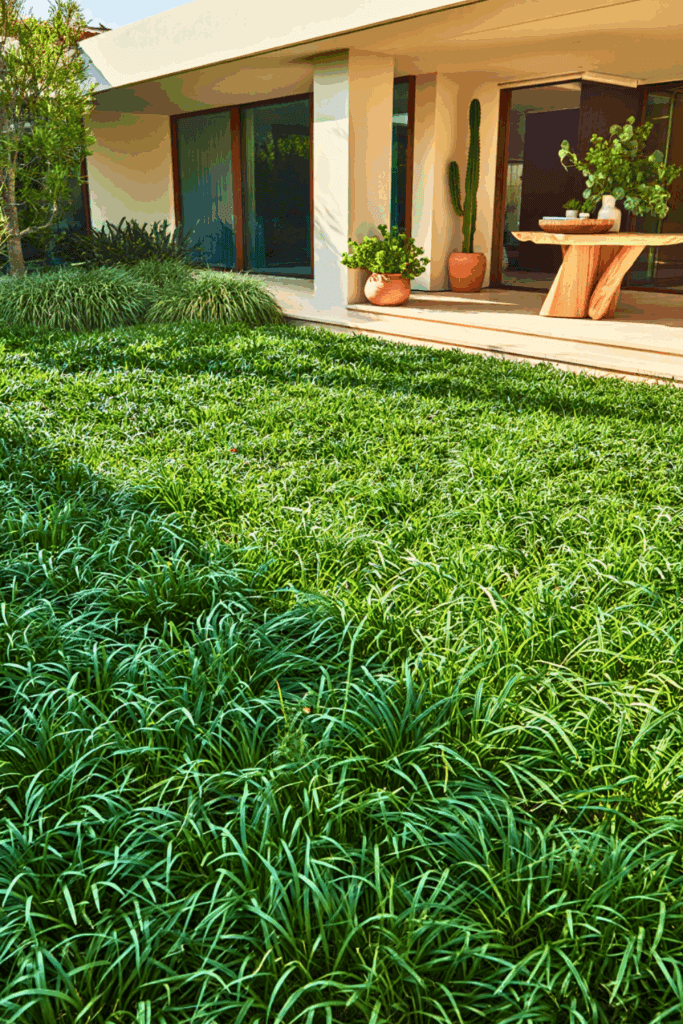
Dwarf mondo grass is often sold as a perfect, low-maintenance border plant—but don’t let its neat, tufted look fool you. It spreads slowly at first, then thickens into dense clumps that are difficult to divide or remove. Over time, these clumps can rise above the soil line, leaving gaps between patches and making lawns appear uneven.
It dislikes wet feet, yet suffers in full sun, making placement a constant balancing act. In humid areas, it can also harbor slugs and fungal rot beneath the foliage. While stunning between stepping stones or in small pockets, using it as a broad ground cover can quickly turn into tedious upkeep.
- Type: Evergreen perennial grass-like ground cover
- Hardiness: USDA Zones 6–10
- Light: Partial shade to filtered sun
- Spread Rate: Slow to moderate via short runners
- Invasiveness: Low, but tough to remove once rooted
- Control Tip: Divide clumps every few years and avoid overwatering
- Biggest Risk: Uneven growth and fungal buildup in humid climates

